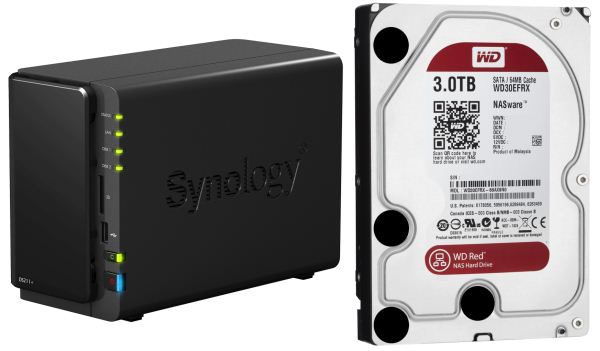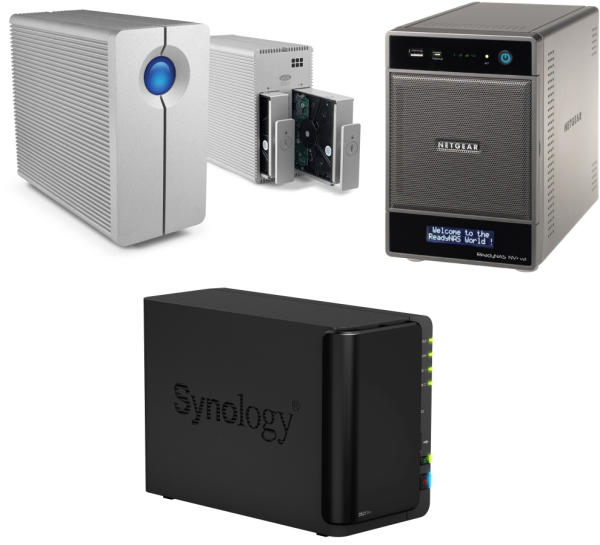Western Digital Red Review: Are NAS-optimized HDDs Worth the Premium?
by Ganesh T S on August 17, 2012 4:20 PM EST- Posted in
- Storage
- NAS
- Western Digital
Introduction and Testbed Setup
Western Digital (WD) introduced hard drives specifically targeted towards NAS systems under the Red branding last month. Jason had some initial coverage at launch time. WD claimed to have put in a number of firmware features and some additional hardware aspects in the Red lineup to make it suitable for NAS usage.
WD touted the following main points
- Less aggressive head parking (no IntelliPark feature)
- Configurable Time Limited Error Recovery (TLER), with a default of 7 seconds
- IntelliPower disk rotation speeds (comparable to Green drives)
- Vibration reduction mechanism in hardware
- 3-Yr. warranty and 24x7 phone support
In the next section, we will analyze each of these claims in detail. First, let us take a look at the testbeds. We used the WD Red drives standalone in a PC and also as part of a few SMB / SOHO NAS systems. Our standalone PC testbed was also used for some of the NAS testing. Our Summer 2012 NAS testbed's specifications are provided below:
| NAS Benchmarking Testbed Setup [ Summer 2012 ] | |
| Processor | Intel i7-3770K CPU - 4C/8T - 3.50GHz, 8MB Cache |
| Motherboard | Asus P8H77-M Pro |
| OS Hard Drive | Seagate Barracuda XT 2 TB |
| Secondary Drives | Western Digital Red WD30EFRX 3 TB |
| Corsair Performance 3 Series™ P3-128 128 GB SSD (Offline in Host OS) | |
| Memory | G.SKILL ECO Series 4GB (2 x 2GB) SDRAM DDR3 1333 (PC3 10666) F3-10666CL7D-4GBECO CAS 7-7-7-21 |
| PCI-E Slot | Quad-Port GbE Intel ESA-I340 |
| Case | Antec VERIS Fusion Remote Max |
| Power Supply | Antec TruePower New TP-550 550W |
| Host Operating System | Windows Server 2008 R2 Enterprise |
| . | |
A Windows 7 virtual machine was set up using Hyper-V with the following configuration
| Windows 7 Ultimate x64 : Guest OS | |
| Processor | Single Physical Core of Intel i7-3770K |
| OS Hard Drive | VHD File on Seagate Barracuda XT 2 TB |
| Secondary Hard Drive | Corsair Performance 3 Series™ P3-128 GB SSD |
| Memory | 1 GB |
The following NAS units were used for testing the WD Red drives in RAID-1 configuration.
- LaCie 2big NAS
- Netgear NV+ v2
- Synology DS211+
The drives were benchmarked against 2 x 3TB Seagate Barracuda 7200rpm drives that were bundled with the LaCie 2big NAS.
An important aspect of NAS systems that we haven't covered in detail is the effect of prolonged usage and how differently the NAS performs when it is close to full capacity. Towards this, we also used our build-in-progress NAS testbed to stress the WD Red drives in the Synology D211+. The details of this separate testbed and methodology are described in a later section.












87 Comments
View All Comments
Sivar - Friday, August 17, 2012 - link
"Pretty horrible article, charts are unreadable."I find them easy to read, but if you are having trouble you can click on each to scale it up in size. Ganesh even saved them as PNG, and kept the colors simple (as is best to do with PNG/GIF), so the fine sizes are very small and the charts look as intended (no JPEG artifacts).
"Actual writing is difficult to read, please be more concise."
I found the writing to be of generally high quality. Perhaps you should offer some examples of overly verbose writing. I'm not claiming there aren't any examples, just that providing some will help make your criticisms more constructive. :)
"Oh and crap like "IT departments have been tempted to use consumer drives". Absolute bullshit. If the author has done this he should be fired from his job."
No, it is not.
Your experience may be limited to well-funded, large IT organizations. I have worked in both poorly funded (school / non-profit, etc.) and "by the book" well-funded companies, like the one I am in now.
I have personally used non-enterprise drives in 24/7 RAID arrays. I researched them first, of course. Some even support, or supported, TLER through special utilities. My own home server has eight Samsung F4s that have worked perfectly for almost 3 years (not that a single data point is very useful).
When you have a smaller budget than list of requirements, you make due, and document the reasons for the decisions made. It's part of real-world IT -- not everyone can afford a NetApp storage rack!
Wwhat - Friday, August 17, 2012 - link
To be fair, if you compare the scaled and full sizes of the pictures and see how they don't employ the full available width (compared to the text) when scaled it does seem a bit poorly done, it would have been better to make the pictures slightly wider and slightly less tall and then have them unscaled I think, you'd have simplified things and have them sharp and clear and still not use more bandwidth or require more speed from the reader's internet.yyrkoon - Friday, August 17, 2012 - link
Well Sivar, it is not even that simple. Which you probably know better than I.Department heads for I.T. usually get a budget for different projects. As well as different criteria for every project. So if you need blazing fast access for a very large database for mission critical information. Then of course you're only going to use the best enterprise classed hardware, perhaps in a RAID10 configuration. But redundancy does not nor ever should stop here. There may be several single drive / array redundant copies after that. With probably tape backup as well. With at least one offsite copy to top it off.
Technically though. This drive is not dissimilar to the Consumer classed enterprise version that Seagate has been selling for years. So should be a cut above the rest. With better firmware, hardware, and Q&A testing ( hopefully ). So in effect. An entry level to enterprise drive. But whatever.
cashkennedy - Friday, August 17, 2012 - link
Yes Phynaz's comments about the article are pretty dumb, but..I dont think this article is very useful / and isnt fitting for anandtech because all he compares wd red drives to unspecified seagate drives that came bundled with a NAS.
Seagate has many different models, the ones that just came out are significantly faster then the models that had been sold for last 1.5 years due to a dramatic increase in aerial density.
Why arent these drives compaired to wd blue, wd green, and various lines of seagate drives...
ganeshts - Saturday, August 18, 2012 - link
The Seagate drives aren't 'unspecified' ones, but the one which came bundled with the unit we reviewed here: http://www.anandtech.com/show/5838/lacies-2big-nas...The exact model number is ST3000DM001, and Anand reviewed that drive in a standalone setting here: http://www.anandtech.com/show/5042/seagates-new-ba...
That drive was released in Q4 2011. So, it is pretty recent (I guess no new internal 3.5" 3TB drives have been released by Seagate since then).
ganeshts - Saturday, August 18, 2012 - link
Forgot to mention, we can only do comparisons with drives already at our disposal. I unfortunately don't have access to 3TB Blues and Greens / other 3TB Seagate drives at my location, and if you actually look at the comments in Anand's review of the ST3000DM001, most people were actually planning to use that for a NAS.cashkennedy - Saturday, August 18, 2012 - link
That actually is the "new" drive i was refering too. If its been out since november it must have been in very limited numbers till recently. It performs really very well as a single drive, but perhaps is not well designed for NAS use.Thanks for the reply, I would still like to see a compairison to some other WD series's but i know that even anandtech is limited in what it can get its hands on, but perhaps you can use my comments to demand wd send some more drive your way.
jfraser - Monday, October 29, 2018 - link
If you can't do an apples-to-apples comparison, why bother? To compare NAS drives to desktop drives, you really should compare drives from the same company. If you couldn't get your hands on 3TB WD Blue drives, you should have just waited until you could.yyrkoon - Friday, August 17, 2012 - link
So what you're saying is that desktop classed systems in the IT department should use enterprise classed drives ?" Stands for "Information Technology," and is pronounced "I.T." It refers to anything related to computing technology, such as networking, hardware, software, the Internet, or the people that work with these technologies. Many companies now have IT departments for managing the computers, networks, and other technical areas of their businesses. IT jobs include computer programming, network administration, computer engineering, Web development, technical support, and many other related occupations. Since we live in the "information age," information technology has become a part of our everyday lives. That means the term "IT," already highly overused, is here to stay."
Now if you mean data centers . . . they use all kinds of hardware.
Personally, I think it is crap. That you speak out of your backside as if you know what you're talking about. If the OP is currently working in "I.T.", *he* should be fired, and given a job at 7-11.
fic2 - Friday, August 17, 2012 - link
"Actual writing is difficult to read..."Well, once you graduate 6th grade this year you will be able to understand the article a little better. Until then have your mom read and explain it to you.